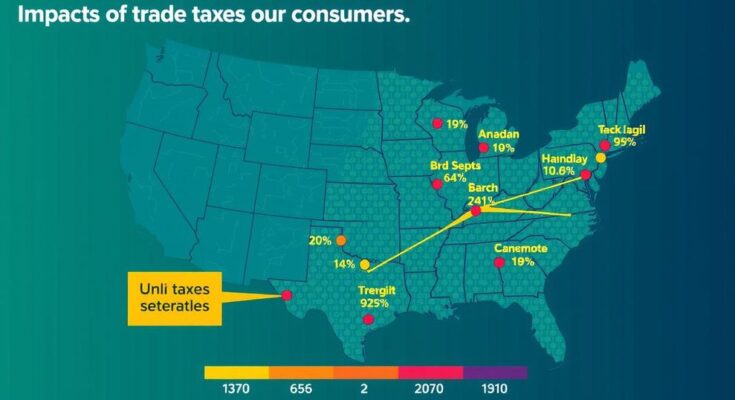Donald Trump’s proposed tariffs aim to protect U.S. jobs but threaten to raise consumer prices significantly. Economic evidence suggests that such tariffs ultimately burden American consumers, as higher prices emerge from the corporate sector’s attempts to defray tariff costs. By analyzing historical data and expert opinion, one observes the potential pitfalls of a protectionist trade strategy that has yet to resolve issues like the trade deficit or invigorate job growth as intended.
In the political arena, Donald Trump’s ambitious trade policy looms large, promising to impose striking tariffs of up to 20% on foreign goods, and even more aggressively, a staggering 60% on products from China. Such taxes are designed to bolster the U.S. economy and shield American jobs. However, many economists contend that these tariffs could hurt U.S. consumers by driving up prices, thus transferring the economic burden back to those they aim to protect. A fundamental understanding of tariffs reveals that while they are taxes paid by domestic importers at the border, the actual financial weight often shifts to consumers through higher retail prices. The economic landscape, as per various studies during Trump’s earlier presidency from 2017 to 2020, indicates that consumers feel the brunt of these tariffs. A notable example involved a 50% tariff on washing machines in 2018, resulting in a 12% price increase, costing consumers an estimated $1.5 billion collectively. This pattern is projected to replicate with any future tariffs proposed by Trump. Estimates suggest that the middle-income households could face an annual financial loss ranging from $1,700 to as much as $3,900, underscoring the direct taxation effect on consumer wallets. Compounding the complexity of this issue, Trump asserts that tariffs are a boon for U.S. manufacturing jobs, a claim tempered by economists who argue that other factors, such as automation, play significant roles in job displacement. The steel tariffs imposed in 2018 aimed at protecting U.S. jobs did not translate into employment growth, with analysts noting that increases in domestic steel prices negatively impacted related manufacturing sectors. Despite the intent, the employment gains from such tariffs remain elusive, urging an examination of their efficacy. Additionally, Trump’s critique of the trade deficit has not yielded the expected results either. Despite the implementation of stringent tariffs, the U.S. trade deficit expanded from $480 billion to $653 billion from 2016 to 2020, contradicting the president’s assertions. The complexities of global trade dynamics have shown that tariffs often invite foreign manufacturers to adapt by shifting production to tariff-free locations, ultimately undermining the original purpose of the tariffs. In this vivid tapestry of trade policy, the interplay of tariffs, consumer costs, job dynamics, and the persistent trade deficit reveals a narrative rich in contradictions and challenges. As the debate unfolds, it is clear this complex trade system demands scrutiny and perhaps a more nuanced approach than sharp tariffs alone can provide.
Donald Trump’s approach to trade policy, characterized by aggressive tariffs, is intended to fuel U.S. economic growth and protect domestic employment. However, this position is widely debated, particularly the implications for consumers who may face higher prices. Understanding how tariffs function—the taxes paid on imported goods—and their potential economic ripple effects is crucial to dissecting this contentious issue. Furthermore, Trump’s historical context and claims regarding trade deficits and employment add layers of complexity to consumer impacts, raising questions about the long-term effectiveness of protectionist measures.
In summary, while Donald Trump’s proposed tariffs are designed as a strategy to protect domestic industries and improve the U.S. economy, substantial evidence suggests that the ultimate burden often falls on consumers, leading to increased prices and potential job losses in other sectors. The promise of revitalized employment in manufacturing has not materialized as intended, and the ever-expanding trade deficit highlights the shortcomings of such tariffs. Thus, the economic landscape remains a battleground of conflicting interests and outcomes.
Original Source: www.bbc.com



